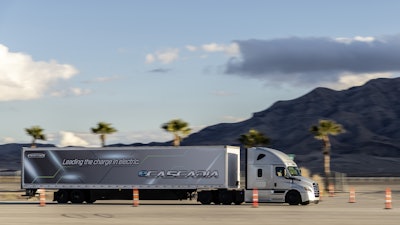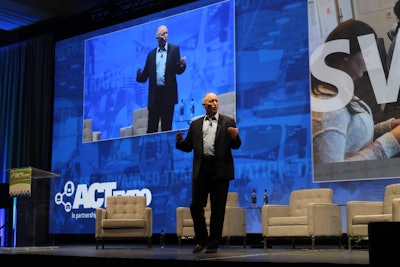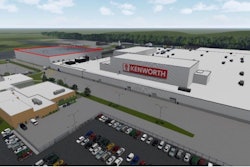
There is no business case today for battery electric trucks. But the industry must work to change that.
That was the message from Daimler Trucks North America President and CEO Roger Nielsen during the keynote address at ACT Expo in Long Beach, Calif., who called on industry leaders and government officials to come together to help step-up the adoption of battery electric trucks which he says faces high upfront costs, charging infrastructure challenges and slow product development schedules.
“Unfortunately, there is no business case today for a sane, sober customer to buy a battery electric truck,” Nielsen said to a large crowd that gathered for the general session on Wednesday which preceded the opening of the exhibit hall.
 Nielsen gave the keynote address at ACT Expo on Wednesday
Nielsen gave the keynote address at ACT Expo on WednesdayNielsen cited a lacking charging infrastructure as a core concern.
“We must work towards a common battery electric charging infrastructure and as we do that we must keep working with the end user in mind,” he said. “Today, there’s not a standard for charging infrastructure. We all need to work together towards this.”
Product development schedules which typically average seven years from inception to rolling out of the factory need to be drastically changed, Nielsen said.
“Today it is impossible to thrive in our industry with such lengthy building cycles. Society demands faster change, our customer demand faster change and we have responded,” Nielsen said.
Nielsen credits Daimler’s in-house R&D teams, or swarms as he calls them, for quickly bringing the EM2 and eCascadia to market.
“When I gave them the great commission in 2017 to build electric trucks for America’s trucking companies, I tasked them to be agile and smart. Eighteen months later we will soon have nearly 50 battery electric trucks and buses running everyday across this country,” he said.
High battery costs and weight also pose problems for fleet adoption.
“Boy, are they are expensive. They’re heavy and they’re large,” Nielsen said.
More government incentives are needed to help spur additional R&D and fleet adoption.
“The incentives help and give us all in the industry a chance to scale up,” Nielsen said.
Incentives for EV production play a key role at Daimler where plans are in the works to deploy 20 electric trucks in Southern California over the next few years thanks to a $13 million grant co-funded by Southern California’s South Coast Air Quality Management District, the U.S. Environmental Protection Agency, and the Ports of Long Beach and Los Angeles.
Despite Daimler’s current involvement in natural gas truck production, Nielsen made it clear that nation’s largest commercial truck manufacturer is betting big on battery electric powertrains. To help reach that goal, the company’s taken on a leading role at the Charging Interface Initiative, or Char-In, to help roll-out standardized charging stations for heavy-duty trucks.
“The road to emissions free driving will be driven by battery electric vehicles. For trucks, I do not believe in plug-in hybrids,” Nielsen said. “For trucks, I believe that natural gas-powered engines are only an interim solution. For trucks, fuel cells as a range extender on battery electric vehicles have promise, but hydrogen fuel cells alone are not yet viable. I believe the future is electric…I believe the future is electric.”











